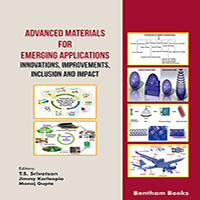Abstract
The selection of suitable biomaterials and implants is the most important
criterion to achieve success in biomedical engineering. Several factors such as high
specific strength, high corrosion resistance, enhanced wear resistance, biodegradability,
and biocompatibility need to be considered before choosing the material for biomedical
applications. The biomaterials are developed from metals, metal alloys, ceramics, and
polymers based on specific applications. In the orthopedic field, inert materials have
been used in earlier times that showed minimal cell-material interaction, and bioinert
materials were preferred to avoid immune rejection and increase the success rate.
Metallic alloys such as Ti-6Al-4V, 316 stainless steel, and cobalt-chromium are
frequently used in the fabrication of bone implants. Metal alloys have problems like
corrosion and are less bioactive. In recent years, the concept of regeneration has been
developed and it is entirely based on cell-material interactions, and the selected
materials need to exert bioactivity. Regenerative materials are prepared from
biodegradable metals, polymers, and ceramics. Numerous techniques have been
developed recently to convert a bioinert material into bioactive or regenerative
material. Smart materials and implants with bioactive surfaces are also getting more
attention in the orthopedic field. This chapter throws light on two fields that have
contributed to bone replacement and regeneration. An overview of the bioinert
implants in the orthopedic industry and the current development of bioinert into
bioactive and immunomodulating materials will be discussed. The future aspects
describe the role of smart materials for bone regeneration in detail.
Keywords: Additive manufacturing, Biodegradable implants, Cobalt-chromium, Orthopedic implants, Smart implants, Surface modifications, Surface texturing, Stainless steel, Ti-6Al-4V.




















